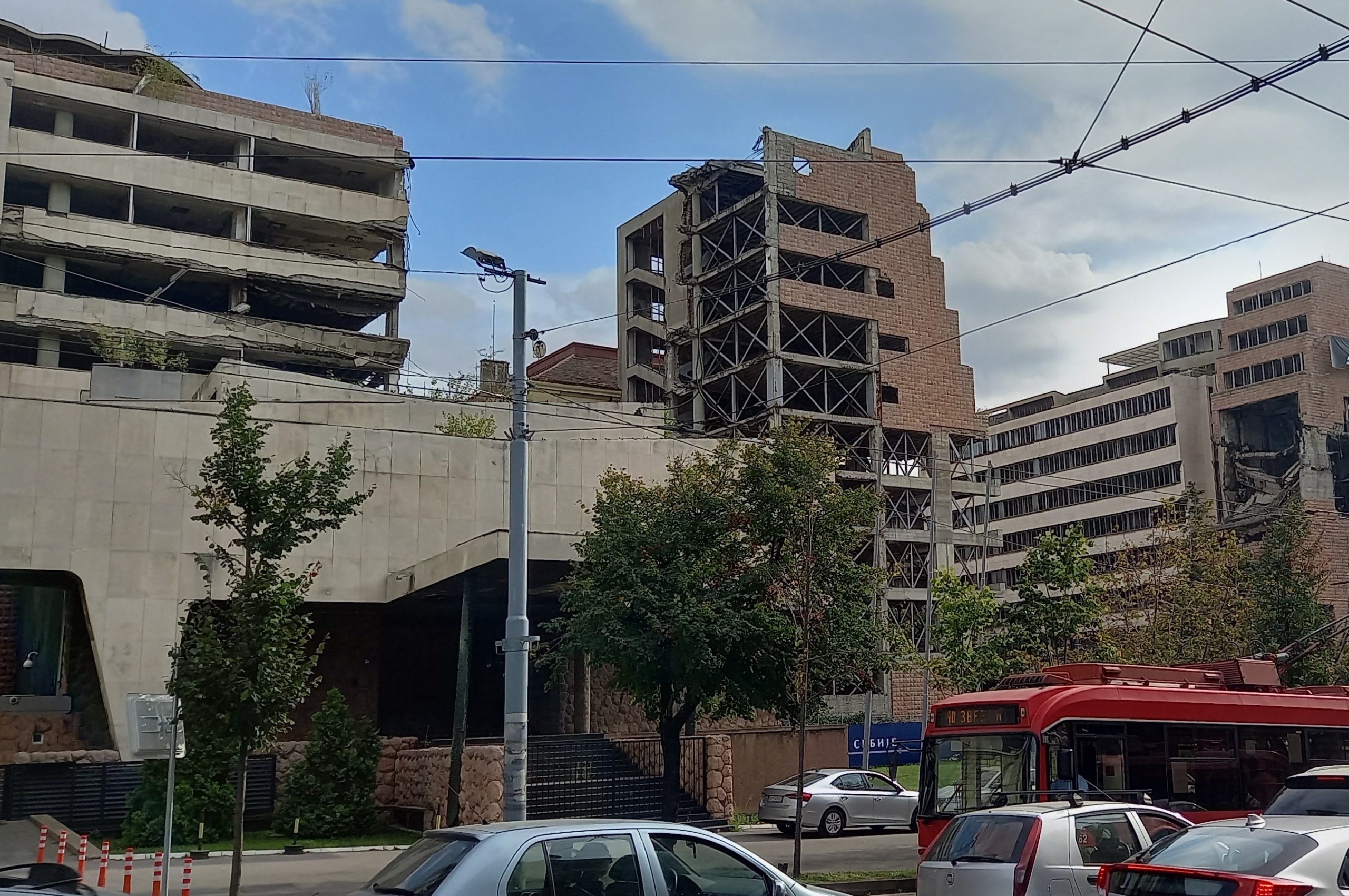
Beograd
The main case study of the Belgrade part of the ARchipelago project – the General Staff – remains deeply intertwined with ideology, politics, war, nation-state, and more recently profit. Consisting of two buildings separated by Nemanjina Street, the General Staff is considered an important architectural landmark, as the architect Nikola Dobrović’s only completed Belgrade project. It was built between 1954 and 1965 in socialist Yugoslavia, replacing the premises of the Ministry of Defense and the Military Academy, heavily damaged in the 1941 bombardment. Dobrović’s buildings were hit in the 1999 NATO intervention — one of them sustaining more damage than the other. They were subsequently protected as cultural monuments, in an attempt to emphasize the importance of their reconstruction as prime examples of post-WWII modernist Yugoslav architecture.
Due to its history as a seat of the Yugoslav and later Serbian military forces, the General Staff remains a highly symbolic and affectively charged place. Not only that it’s by no means neutral or innocent — its relation to memory and remembrance is complex and multilayered — but its continuous exploitation as an object of self-victimizing nationalistic discourse further impedes a social consensus on the role of the Serbian state and its army in the wars of the 1990s. Over the last two decades, the press occasionally reported about the interests of foreign buyers in this central city location. The recent announcement of Jared Kushner’s plans to build a hotel in its place, with a memorial attached, gave another incentive for architecture, urban planning and heritage protection professionals to voice out their dissatisfaction.
After consulting with historians, architects, and theorists, and relying on historical photographs, television footage, real-time clips and available online content, the CZKD contribution to ARchipelago project aims to contextualise the General Staff from the perspective of the Center’s anti-war engagement of thirty years. Linking to other CZKD programmes and topics tackling the politics of memory and remembrance concerning war, as well as the recent massive urban transformation driven by the capital, it is meant to open a critical debate against simplifications and selective representation of the General Staff buildings.
Index: Collection/ Holding – Document type (V-Video, P-Photograph, G-Graphic, T-Text) – Location (B-Belgrade, M-Mostar, P-Prizren, S-Sarajevo) – Sequential number.
A special mention: Vladimir Kulić, Olga Manojlović Pintar, Jelena Petrović, Milan Popadić, Aleksandar Staničić.
Credits: Jasmina Đokic Pavkov, Bojan Fajfrić, Ana Graovac, Lola Joksimović, Jelena Kesić, Ana Miljanić, Nataša Pavlović, Nemanja Petrović, Ana Sladojević, Ljubica Slavković, Predrag Šestić, Slavica Vučetić, Ivan Zupanc.
Photo credit: Lola Joksimović, CZKD; The Generalštab, Belgrade (detail).